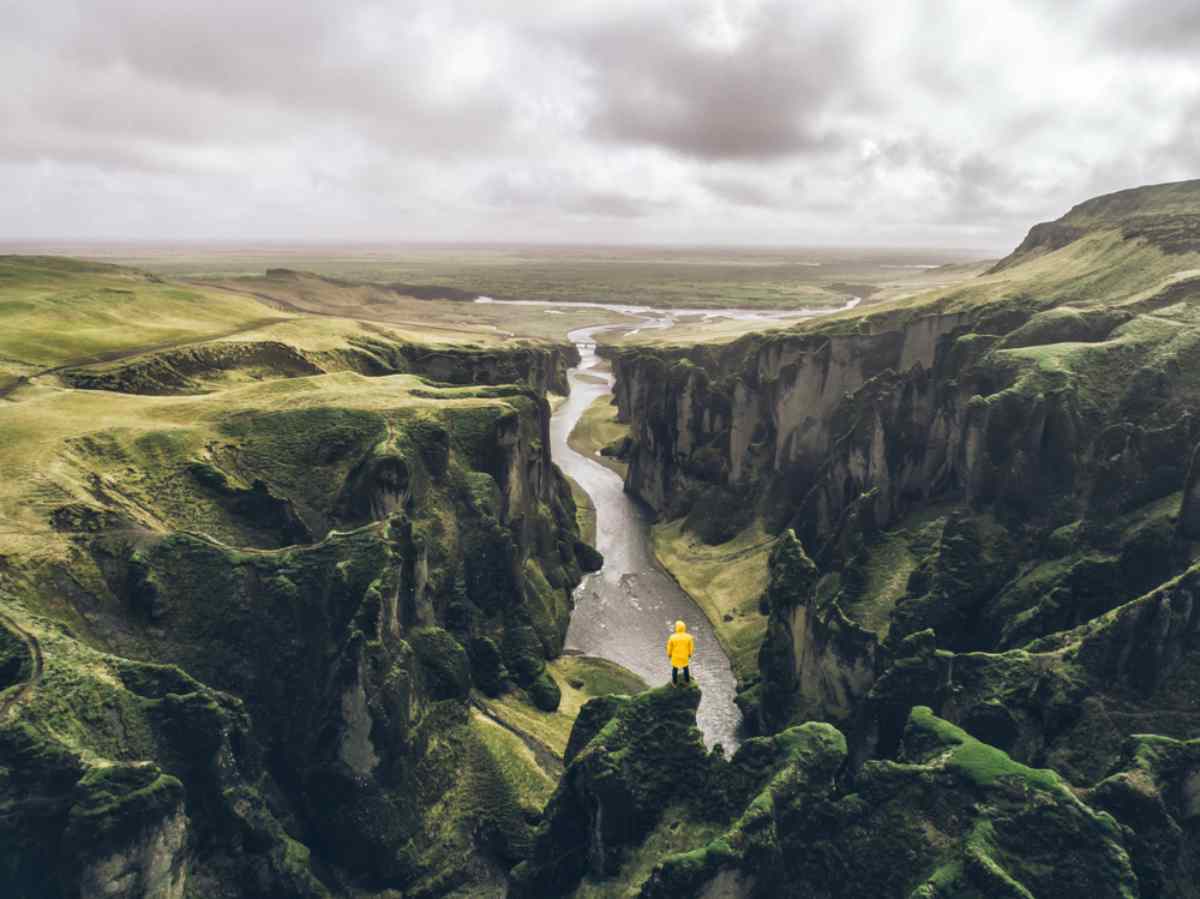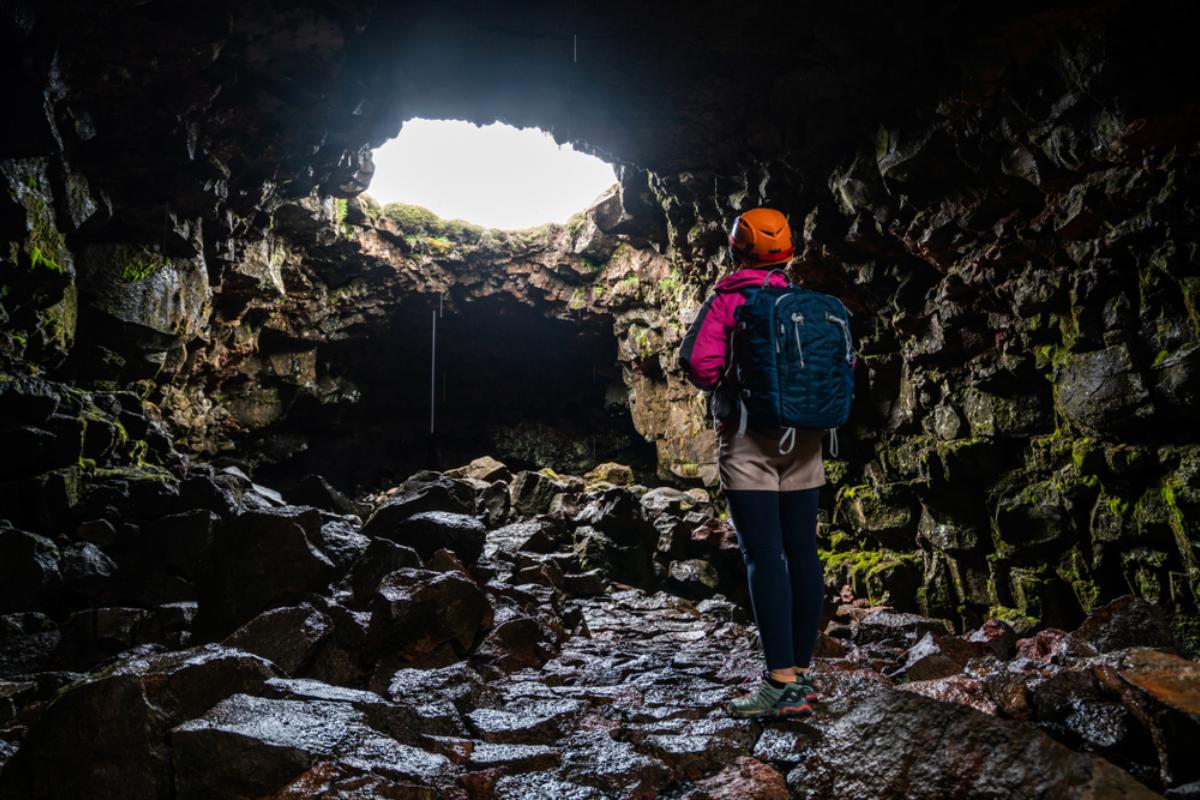Breiðafjörður Bay in Iceland truly has it all. Want to visit one of Iceland’s largest fjords? Go to Breiðafjörður. Want to check out a quaint little Icelandic village? Then Breiðafjörður is the answer. Want to spend some time in a bay, spotting all sorts of wildlife? Once again, Breiðafjörður should be your go-to.
If this is the first time you’ve heard about Breiðafjörður Bay in Iceland, have an upcoming trip to the island, or would just like to learn more about this unique place – read on. You’ll be surprised what you learn about this versatile, all-rounder.
Overview of Breiðafjörður Bay in Iceland
Before we dive in head-first, let’s settle the basics regarding Breiðafjörður Bay:
What is Breiðafjörður Bay?
As the name suggests, Breiðafjörður is a bay, but this bay has quite a few tricks up its sleeve. The bay itself is broad, but pretty shallow, and clocks in at 50 kilometers wide and a staggering 125 kilometers long.
Despite it being fairly shallow, the Breiðafjörður boasts one of the largest fjords in Iceland and is particularly known for its many islands. Most of these islands are only inhabited by wildlife though. Knowing all of this, it’s not surprising that the beautiful Breiðafjörður is an official nature reserve here in Iceland.
.jpg)
Where is Breiðafjörður Bay Located?
Breiðafjörður Bay can be found in West Iceland. It actually separates the Snæfellsnes Peninsula in the south from the Westfjords in the north. To give you a better idea of its location when you first arrive here on the island; Breiðafjörður is roughly 140 kilometers from the capital city of Reykjavik.
But don’t let the distance fool you; even though it’s close enough for a day trip during the days with plenty of daylight hours, we don’t recommend it since there is so much to see and do in the area.
Why is Breiðafjörður Bay Important?
Firstly, Breiðafjörður Bay’s importance cannot be disputed. It has been named as a UNESCO World Heritage Site. As a nature reserve preserving an abundance of wildlife, it plays a big role in the biodiversity of the island.
Some of this wildlife also includes fish, which makes Breiðafjörður Bay essential to the food chain and the economy of the country. The latter is also the reason why Breiðafjörður Bay is sometimes referred to as the “breadbasket of Iceland”.
.jpg)
Geography and Geology of Breiðafjörður Bay
If there’s one thing the Land of Fire is known for, it’s incredible geography and geology, and Breiðafjörður Bay is no different:
How was Breiðafjörður Bay Formed?
The bay is the result of a clash between the main elements here in the Land of Fire and Ice: volcanic eruptions and glacial flooding. The bedrock of the bay mainly consists of basalt rock (volcanic “leftovers” if you will) that is millions of years old (researchers place it at anything between 10-15 million years), which is some of the oldest in the country.
It is this exact basaltic lava volcanic “leftovers” that continuously got eroded by glacial floods over time that formed the incredible and contrasting terrain we find at Breiðafjörður today.
.jpg)
What are the main physical features of Breiðafjörður Bay?
Breiðafjörður Bay is a typical seascape, but it is surrounded by mountains with incredible and unique views- from the 3000+ islands dotting the waters to the Snæfellsjökull Glacier that can be seen in the distance.
What are the Main Islands in Breiðafjörður Bay?
As we already mentioned, Breiðafjörður Bay is known for its islands, and whilst there are more than 3000 official islands, many believe the real number is impossible to figure out. But even though Breiðafjörður is referred to as “the Thousand Islands Bay”, there are a few that are considered to be the main islands. They are:
Bildsey Island
This island can be found northeast of the town of Stykkisholmur. Although the island is uninhabited today, it was once populated by 16 people who had three boats, five cattle, and seventeen sheep.
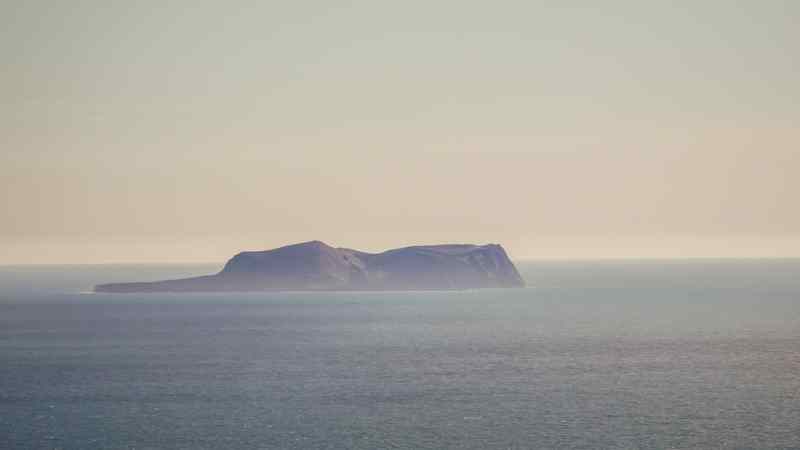
Bjarnareyjar Islands
These are a cluster of ten islands that lie the most south of all the Breiðafjörður Bay islands. This is yet another completely abandoned island, but was once one of the main fishing operation hubs, boasting 230 fishermen and 50 boats.
Brokey Island
This might sound like a place you reach at the end of every working month, but this is actually another one of the larger islands in Breiðafjörður Bay. Brokey Island is quite interesting when it comes to the human history at Breiðafjörður. One inhabitant was Jon Petursson, the falcon hunter. This man spoke English, German, and Danish due to his travels around the world, and he was the pioneer in nursing Eider Ducks and exporting their down.
And if you think people such as Robert de Niro have impressive dad statuses, you have not heard about Jon Petursson yet. He had 30 children in total with the last being born when he was already in his eighties! Another legendary man who resided in Brokey was Hans Becker. He was a Danish man who was made the Lawman of the West and the North, and he is the one responsible for literature that was left behind about the restoration of Iceland.
Ellidaey Island
This island can be found northwest of the town of Stykkisholmur and is a pretty interesting place. It is one of the islands known for its birdlife and the lighthouse built in 1951. Although the island was inhabited for many years with one of its residents, Olafur Jonsson, being the first fox breeder on the island.
One of the cliffs where all the birds can be found today is called Pagan Cliff, and this specific cliff was left unblessed by Bishop Gudmundur the Good because he believed that the cliff protected elves, ghosts, and all sorts of other supernatural and mystical beings. This is also one of the islands that is prominently featured in the Book of Settlements that forms part of the Icelandic Sagas.
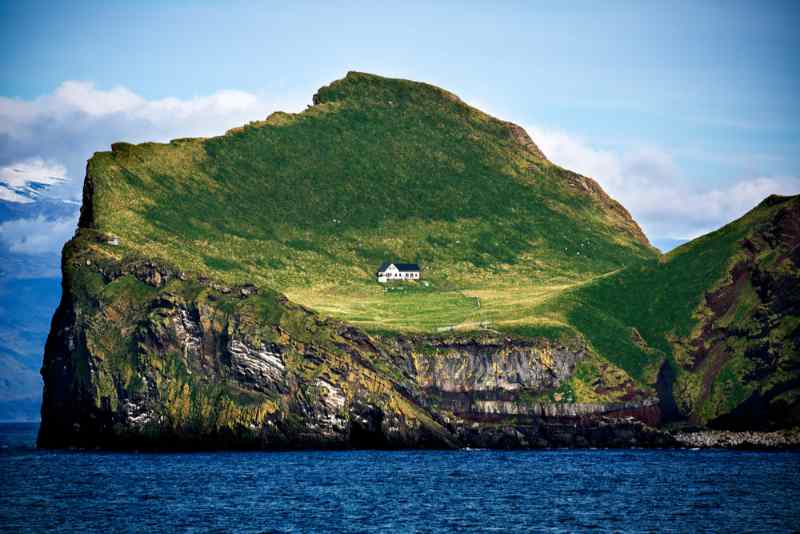
Fagurey Island
One of the most renowned writers of the Icelandic Sagas, Sturla Thordarson, lived on Fagurey for the last decade of her life. The island is quite vegetative and flat with low cliffs and was mostly used for seal hunting, bird egg collecting, and Puffin catching back in the day.
Flatey Island
Flatey is the largest and the most well-known of the islands in Breiðafjörður Bay and is a bit of a Russian Doll scenario where Flatey has its own 40 smaller islands belonging to it. What made Flatey Island so prolific was the fact that it was an important trading post ever since the Middle Ages.
Flatey is credited for being the start of culture and art here in Iceland, and it is one of the few Breiðafjörður islands still inhabited. Part of the island is a nature reserve and wildlife sanctuary, and the Baldur Ferry that runs between Stykkisholmur and Brjanslaekur has Flatey Island as a stop along the way and takes visitors to the island twice a day during our summer peak season.
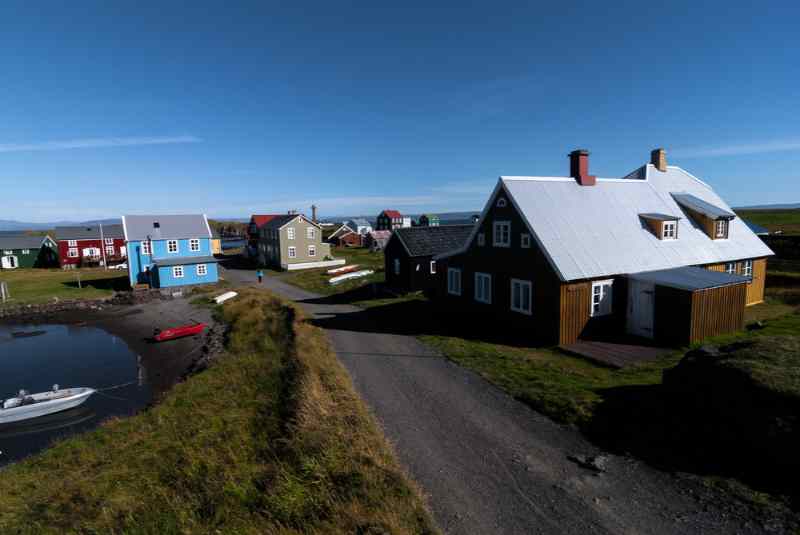
Gjardeyjar Islands
This cluster of islands can be found east of Brokey Island. It was once home to about 6 people but has been abandoned since 1927.
Gvendareyjar Islands
This group of islands is found just off the Skogarstrond Coastline, and, as far as we know, only one man named Thormodur Eiriksson ever lived there (and that was till 1741). A lot of legend and folklore surrounds Thormodur. He was believed to have been a sorcerer and magical poet (what a combination!) who’s credited as a mentor to others such as Magic Loftur.
This man was said to be so powerful that demons would do his rowing when he went out fishing and whenever a jealous fellow sorcerer would send spirits or ghosts to harm him, he would either send them back to the ground or actually amplify the being and “return to sender” with the sender becoming the victim of their own ill-intent.
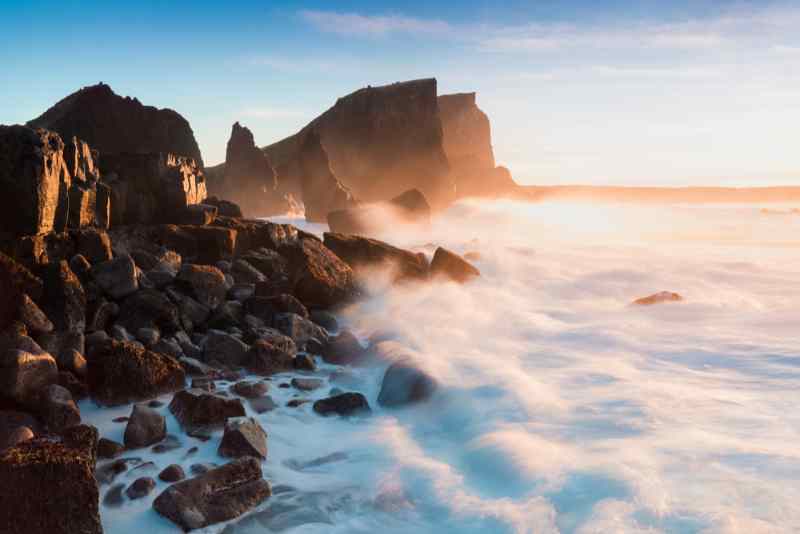
Hergilsey Island
This is yet another island mentioned in the Book of Settlements. People occupied the island on and off for many years, and after the last resettlement in 1783, it’s become home to about 60 people (the maximum the small island can accommodate). Today the island’s main claim to fame is the geothermal activity that occurs on the islets of Reykey and Sandy which plays a crucial role in the economy of Breiðafjörður.
Hoskuldsey Island
This tiny island is just 450 meters long and 150 meters wide and was home to farmers and fishermen till about 1934 when even the Autumn fishing there stopped.
Hrappsey Island
This island lies just 7 kilometers southwest of the town of Stykkisholmur and southwest of Purkey Island. What makes this island so interesting is that the structure of the island consists of Anorthosite, which is a type of rock that can be found on the moon. The island is private property, and no unauthorized visits are allowed.
.jpg)
Hvallatur Islands
This is an interestingly shaped cluster of layouts that consists of three, long, parallel groups of islands separated by two channels. It is actually possible to travel all across the islands, skerries, and islets when the tide is low, especially during the Spring and Autumn tides.
Hvitabjarnarey Island
This island has a gorge with a big boulder in it. This boulder is surrounded by legend. Some believe it was a boulder thrown by a giantess who wanted to destroy the church at Helgafell, whilst others believe that she threw the boulder in revenge for one of the farmers who fished on Hrappsey Island.
Klakkseyjar Islands
This cluster of islands can be found just north of Hrappsey Island. It’s a well-known breeding spot for birds with the shags becoming so tame that it’s become a favorite stop for boat tours.
.jpg)
Melrakkaey Island
This tiny island can be found at the mouth of Grundarfiord Bay, and directly translates to ‘Fox Island’. Today the island features some ruins from the past and an abundance of birdlife.
Oddbjarnarsker Island
This island is the westernmost islet of Breiðafjörður Bay, 16 kilometers south of Bardastrond and 40 kilometers north of the Snæfellsnes Peninsula, and is nothing more than a heap of shell sand stretching out 100 meters long and 80 kilometers wide. This is yet another popular spot for breeding and nesting birds, especially the Iceland Puffins. And harbour seals can also be spotted basking there.
Olafseyjar Islands
This cluster of islands never had any permanent residents who resided there the whole year round, but were often used for haymaking and wool processing, with workers often being left there along with the sheep and cattle. The house still standing on the island was built after the turn of the 19th century and was used to house these workers.
.jpg)
Oxney Island
The island is the second-largest island off the Skogarstrond coast and covers almost 100 islands and islets. It’s fairly barren with high, rocky mounds. Because it had such easily accessible landing spots, it was one of the first islands to have settlers.
Purkey Island
This island belongs to Dalir District and is separated from Skaley Island by the Skalastraumur Channel (which can be passed on foot during low tide). Back in the day, the island was inhabited by a woman called Aesa Kjallaksdottir whose son helped Erik the Red prepare for his departure to Greenland.
Her burial mound can still be found on the island today. The last farmer who permanently resided on the island left in 1982, but the island is still used for its advantages today.
.jpg)
Rifgirdingar Islands
This cluster of islands was inhabited and used by farmers for many, many years. It is fairly large and well-vegetated. Although the islands were abandoned by the last permanent resident in 1974, and no more farming is practiced there, a holiday home can be found there with some ruins of the old farms.
Saudeyjar Islands
The Suadeyjar Islands can be found in the northwest corner of the Vestureyjar Archipelago. They were inhabited during the 18th and 19th centuries, but finally abandoned around 1930. This was because life on the islands was pretty rough. There weren’t great landing spots and water was a scarce commodity.
.jpg)
Skaleyjar Islands
Skaleyjar Islands can be found roughly 7 kilometers from Haugsnes on the mainland. This is a cluster of about 160 islands, skerries, and islets, but unlike many other island groupings, these aren’t as easily accessible by foot. Legend says that Fagurey (the largest of the 160 islands) was abandoned because of it, being haunted or the Bubonic Plague (depending on who you ask).
Stagley Island
Stagley Island is the southernmost island of the Vestureyjar Archipelago and lies 4-5 kilometers north of the Bjarneyjar Islands. The island is flat, doesn’t offer much in terms of landing spots, and is pretty vulnerable to breakers and the weather, so it saw a couple of inhabitants that tried to make a go of it there before it was completely abandoned in 1801.
Svefneyjar Islands
The Svefneyjar Islands consist of 400 small islands and islets. Most of the Svefneyjar Islands can be reached by foot during the low tide. The longest of the islands are 1.5 kilometers long and 500 meters wide. The inhabitants of the island were responsible for the first seaweed harvesting around the islands back in the day, and the Book of Settlements mentions salt making, but today the islands are uninhabited.
.jpg)
Svidnur Islands
This island grouping can be found in the northwest corner of Breiðafjörður Bay and consists of about 23 islands and skerries. Their claim to fame is their natural beauty, panoramic views, and abundance of birds and seals. The islands were inhabited on and off throughout the years, but changes in occupants were frequent till 1956 when it was permanently abandoned.
There are many legends surrounding Svidnur, so feel free to ask the locals about it on your trip. One such legend tells about the first settler, Hallsteinn, catching his slaves dawdling while they were supposed to be making salt on the Svefneyjar Islands. So, he took them to Svidnur and hanged them there. This is why you still find Gallow Cove and Gallow Rocks there today.
Thorisholmi Island
Thorisholmi can clearly be seen from the town Stykkisholmur and lies about 3 kilometers to the south of Bildsey Island. There’s a very intriguing story behind the name of the island. The legend goes that a farmer in Helgafell County caught a mermaid by hooking it under his belt.
.jpg)
The mermaid’s name was Thora and he fell in love with her instantly. She agreed to stay with him for three years if he agreed to release her at the same spot after the three years had passed. They had a daughter together who later lived on Ellidaey Island, and she would often be seen spanning wool into the sea.
Vadstakkaey Island
This island lies 500 meters north of Steinolfssker Islet and 3.5 kilometers south of Ellidaey Island. This is also an interesting island. Vadstakkaey only got its name in 1861 with the New Farm Registry.
It’s a well-vegetated place, so one would think that this would be a great first option for settlers, but the first settlers only arrived in 1700 and didn’t even stay more than 60 years. There are many theories as to why this is, ranging from a lack of water to bad landings, and even ghosts.
The Wildlife of Breiðafjörður Bay
As you’ve probably already become aware of throughout our island descriptions, Breiðafjörður has an abundance and wide variety of wildlife, birdlife, and marine life.
.jpg)
What Marine Life Can be Found in Breiðafjörður Bay?
You’re most likely to spot the following at Breiðafjörður:
-
Porpoises
-
White-beaked Dolphins
-
Minke Whales
-
Harbour Seals
-
Grey Seals
What Birdlife Can Be Found in Breiðafjörður Bay?
If you’re an avid birdwatcher, keep an eye out for the following (just remember to check whether it’s the right season!):
-
Arctic Tern
-
Divers
-
Greylag Goose
-
Common Eider
-
Arctic Skua
-
Greater Scaup
-
Long-tailed Duck
-
Puffins
.jpg)
What Other Wildlife Can Be Found in Breiðafjörður Bay?
Another animal that can be spotted in the bay is the Arctic Fox. Although they do not den in the area, they forage on its shores – especially during breeding season for birds such as the Puffins.
Human History and Culture of Breiðafjörður Bay
As you can see from our in-depth island descriptions, Breiðafjörður can be pretty proud of its human history and culture (and it certainly is a long one).
What is the Human History of Breiðafjörður Bay?
Humans have always lived on and off the islands throughout the centuries, and has an unbroken history of human use, although Flatey is the only island still inhabited all year round. The reason the site was named an official World Heritage Site is not only for its exceptional combination of natural features but also because of its exceptional cultural and historical heritage.
.jpg)
What is the Cultural Significance of Breiðafjörður Bay?
The cultural significance is plentiful. When it comes to art and finer culture, one of the bay’s islands is credited for the start of it all here in Iceland. When it comes to learning about our past, Breiðafjörður Bay is a great place to start, not just because of the ruins still found there, but also the islands’ prominent roles it has had in the Icelandic Sagas.
It also played a big role in Iceland as a seafaring nation and the economy as a whole, whether exporting down, all sorts of agricultural practices or acting as a major trading post.
What are the Main Human Activities in Breiðafjörður Bay Today?
Today, human activities in Breiðafjörður Bay are limited and the area heavily relies on tourism. But you will still find some who are fishing, hunting, algal harvesting, or eiderdown collecting.
.jpg)
Tourism in Breiðafjörður Bay
As we already mentioned, tourism is incredibly important to the sustainability and growth of Breiðafjörður.
What are the Main Tourist Attractions in Breiðafjörður Bay?
You can add the following highlights to your trip itinerary:
-
Visiting Flatey Island and its quaint village (you can even sleep over there at the hotel).
-
Go birdwatching (this can also be done via a boat tour).
-
Go on a whale watching boat tour.
-
Take the Viking Sushi boat tour (quite the sightseeing experience).
-
Visit Stykkisholmur and its harbor.
-
Check out Hraunfossar and Barnafoss Waterfall nearby.
-
Take a photo of our famous Kirkjufell Mountain (summiting is exclusively for experienced climbers with the help of a guide).
-
Check out Snæfellsjökull Glacier and visit the Snæfellsjokull National Park.
-
See if you can spot any wildlife, marine life, or birds from the Breiðafjörður Bay shores.
.jpg)
What are the Best Ways to Experience Breiðafjörður Bay?
There are mainly two ways one can visit and experience everything Breiðafjörður has to offer. You can:
-
Go on a guided tour of the area (whether a holiday tour package or a local sightseeing boat tour is up to you).
-
You can do a self-drive and truly immerse yourself in the breathtaking landscape, local activities, and the little towns and villages (including Flatey via Ferry).
When is the Best Time to Visit Breiðafjörður Bay?
Breiðafjörður Bay can actually be visited all year round, and when people decide to visit will depend on the following:
How You Handle Crowds
If crowds are not your thing, visiting the island during our peak season (the summer months in Iceland from June to September) is probably not for you. During this time one can often feel a bit crammed at local attractions and things such as guided tours in Iceland get fully booked pretty quickly.
The crowds even make finding accommodation, transport, etc. a challenge & you’ll need to ensure that you make bookings well in advance to avoid any disappointment.
.jpg)
How Tight Your Budget is
Peak season doesn’t just bring with it peak season crowds, but also peak season pricing. So, if you are on a very tight budget, you should probably also try to give our peak season a skip.
What You Want to See
We have a few seasonal things here on the island that Breiðafjörður Bay is well-known for. So, if you want to see the Northern Lights, a visit during the warm summer months with very little darkness is not a good idea. If you want to spot some Puffins, you’ll need to arrange your trip during their breeding season from May to August. For our whale season, you’ll need to come between April and September.
.jpg)
What You Want to Do
Breiðafjörður Bay is a favorite for all sorts of outdoor activities. For this, you’ll need the Iceland weather on your side and plenty of daylight hours. That means that for an outdoor adventure trip, you’ll have to plan your visit between the months of April and October.
Breiðafjörður Bay; A Treasure Trove of Mystical Stories & Magical Places
With literally thousands of islands to choose from, each with its own selection of interesting sights, stories, and activities, Breiðafjörður Bay is a must-visit spot here in Iceland.
If you are planning on renting a car in Reykjavík upon arrival and hitting the road on a road trip around the island, we highly recommend that you add Breiðafjörður as a stop along the way and allocate at least a couple of days for proper exploration of the area. Now that you know just how amazing Breiðafjörður is, it’s time to come and experience it for yourself!


 By
By
